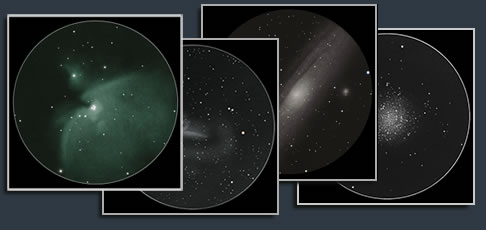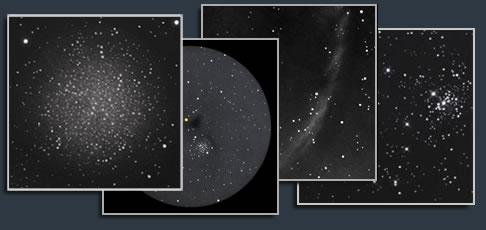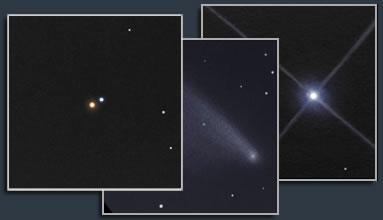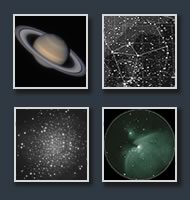Sketches of Astronomical Objects
Gallery of drawings of astronomical objects, as they appear in my telescope's eyepiece.
The purpose of these works, apart from artistic expression, is to present deep sky and other celestial objects the way we "really" see them in a telescope - by our own eyes and not through artificially enhanced astrophotography images. Visit one of the galleries, or see the list of objects. If you are a beginner who would like to know what can you expect to see through a telescope - you might be interested in this article.
Messier deep sky objects drawings

NGC, IC and other deep sky objects drawings

Double stars and solar system objects drawings

Description:
I made these drawings during observing sessions at my telescope's eyepiece.
Most of these sessions were held at Negev desert in Israel, which features moderately dark skies (bortle 2-3) with dry air and ~6.6-7.1 naked eye limiting magnitude (NELM).
The sketches were rendered on a white paper (mostly) under the illumination of a red flashlight, using graphite pencils and various art tools.
The instruments I mostly used were 8", 10", 12" equatorial newtonians.
Since the original drawings are made with graphite pencil - they appear black on a white background. In order to acheive realistic impression - the sketches are digitalized, inverted and processed in Photoshop. Depending on an object - it takes between 30 mintues to 5 hours to make a complete drawing (including the sketch and the processing).
Click on one of the links above to visit the galleries.
In case you are interested in high resolution versions or the original scans for publishing - feel free to contact me.
Sketching versus Photography:
To a human eye - the universe appears faint and gray (excluding close stars and some nebulae). This is different from what long exposure and highly processed photography teaches us.
While Hubble photos may look pretty and give us a lot of scientific information - this is not how human eye percepts the space.
For example: If one would approach in a space ship to Andromeda galaxy, he would not see a brilliant whirlpool of stars and colorful nebulae like we see in photos. In reality he would see something huge, gray and rather faint - similar to how our own Milky Way galaxy looks from a really dark site.
In my opinion - this impression can only be achieved through visual observations and expressed by drawing.
Publications:
Astronomy Magazine (jan 2014 issue - Horsehead and Rosette nebulae, dec 2014 issue - Messier 35). Sky and Telescope Magazine (sep 2017 issue - Messier 42 and Albireo, sep 2015 issue - Iota Cassiopea, may 2017 article - Messier 13, dec 2015 web article - Venus occultation photo). Unveiling Galaxies (book by Jean Rene-Roy, 2017 - Virgo cluster). BBC Sky at Night Magazine (dec 2019 issue and web article - Messier 1, 33, 42, 31, 81, 82, 35, NGC 2392, 869, 884) Interstellarium Magazine (mar 2017 issue - Messier 41, june 2012 issue - Messier 71 & Garadd comet). Astronomie Magazine (july 2016 issue - Messier 11, may 2015 issue - Messier 3). Jerusalem Museum of Science ("Games of the light and shadow" art exhibition, 2013-2016). Weizmann Institute of Science ("Science Festival" event, 2011). Ort Braude College Gallery ("Light Years within Touching Distance" event). Journal of Astronomy and Astrophysics (Volume 584, 2015, A90 paper, Virgo cluster chart from "Deep Sky Hunter")
List of sketched DSO:




